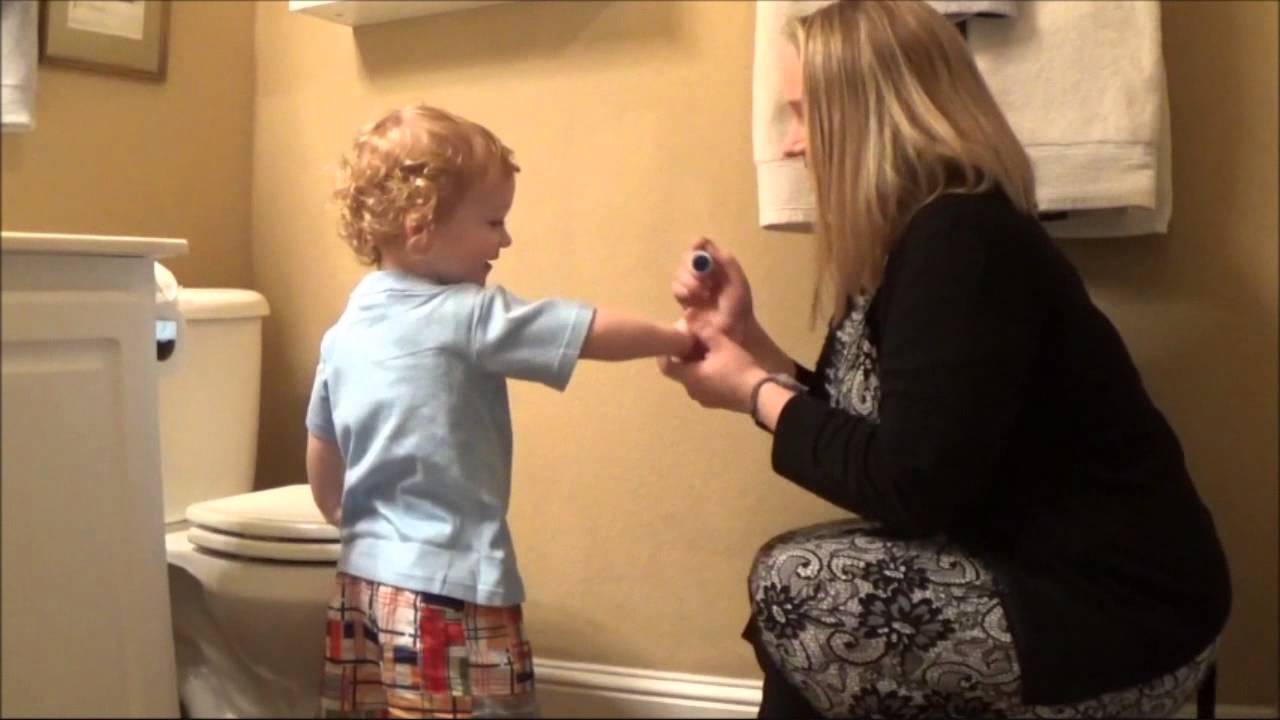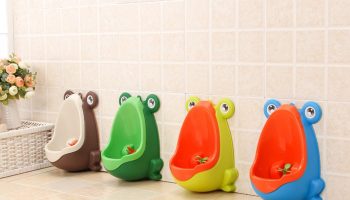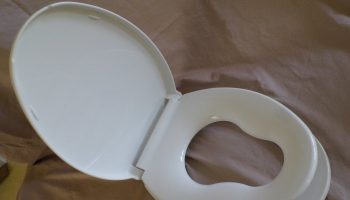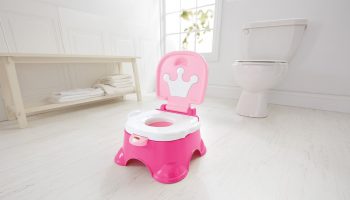
The key to potty training success is starting when your son is ready. If you begin before this, the process will take longer to complete.
He may be ready at the age of 18 months, or it may not be until he is four years old. Boys tend to stay in nappies for a few months longer than girls. If he has older siblings, he may learn faster than if he was a first-born.
If your son is ready to start, focus on timing. If he’s just changed his nursery or has a brand new sibling, it may not be a good time. He may be less open to change, or feel too overwhelmed to tackle this new challenge. Waiting will ensure that you get potty training off to the best start.
Contents
Have a Dude Show Him the Way
Face it. Sometimes it’s just easier for Dad to show his son exactly what to do. Oftentimes Mom is on potty duty, or in the case of single moms like me, there is not a male role model in the home 24/7. “On average, boys take longer to potty train, largely because Mom is usually in charge of the process,” says Singer, mother of two boys. “And try as we might, we can’t model peeing while standing all that well.” As a single mom I feel like there’s no harm in letting my son watch me, since he tends to mimic me in other everyday situations (brushing hair and teeth and slipping on socks). However, I know it’s cool for him to have a guy around (like my two awesome brothers). Singer agrees: “It’s best to have Dad, a grandfather, uncle, or older brother show your son how it’s done.”
Try Naked Time
Let your child peruse your home…naked, or in just a T-shirt. Because he’s not wearing a diaper or underwear, he’ll have no place to put his pee or poop; he needs to put it somewhere—in the toilet would be a good idea! When he does put it in the potty, make sure you both have a look (yuck, I know, but the visual is important.) Make flushing a huge deal by pointing at the swirling water and acknowledging the cool whooshing sound.
Sit or Stand: Let Him Decide
Your son, like my 2-1/2-year-old, might be showing signs that he’s ready to potty train, alerting you with a full diaper. Now what? Does he sit, or stand and aim? Relax — whether he sits or stands — the goal is that he goes. Singer recommends introducing both options. “Boys should start out with whatever they are most comfortable doing. If he starts out sitting, he can always switch to standing when he’s more adept at using the toilet.”
Be Patient
As eager as you may be to ditch the diapers, many moms stress the importance of delaying toilet training until your son is ready. Amanda G. shares, “There really is no right age. Just keep your eyes open for signs of readiness.” Jessica D. agrees: “My little boy is a little over 3-and-a-half, and he just now decided he wanted to potty train. . . . He will do it when he is ready; just be patient and give lots of encouragement.” Common signs of potty-training readiness (which generally appear between age 2 and 3) include asking questions about the bathroom and toilet, staying dry for longer periods of time (indicating stronger bladder control), wanting to wear “big kid” underwear, or telling you when he’s soiled a diaper.
Give a Reward (and Get Creative!)
Stickers, stamps on the hand, bubbles or a single M&M are all good potty prizes. Kick it up a notch by taking your child to the dollar store so he can pick out a super-special potty prize for a training milestone like the first full day in undies or staying dry overnight. Food prizes like a pizza party for dinner or ice cream sundae bar for dessert (set out sprinkles, gummy bears and cherries in bowls, and let your child create his own sundae) are also great ideas. If you don’t want to spend money, look around your house for an art project you can do together and display it so he can show off his “potty prize.”
How should I deal with potty-training accidents?
Stay calm and remember that it’s all part of the process. The more he uses the potty, the better he’ll be at it.
Even children who have used the toilet successfully for months occasionally have accidents. Telling your child off for wetting his pants might mean more months of nappies, rather than fewer.
Dress him in loose-fitting clothes that he can easily take off. But if he still still wets his pants, don’t overreact or punish him. Nothing can disrupt potty training faster than making a child feel bad for having an accident.



